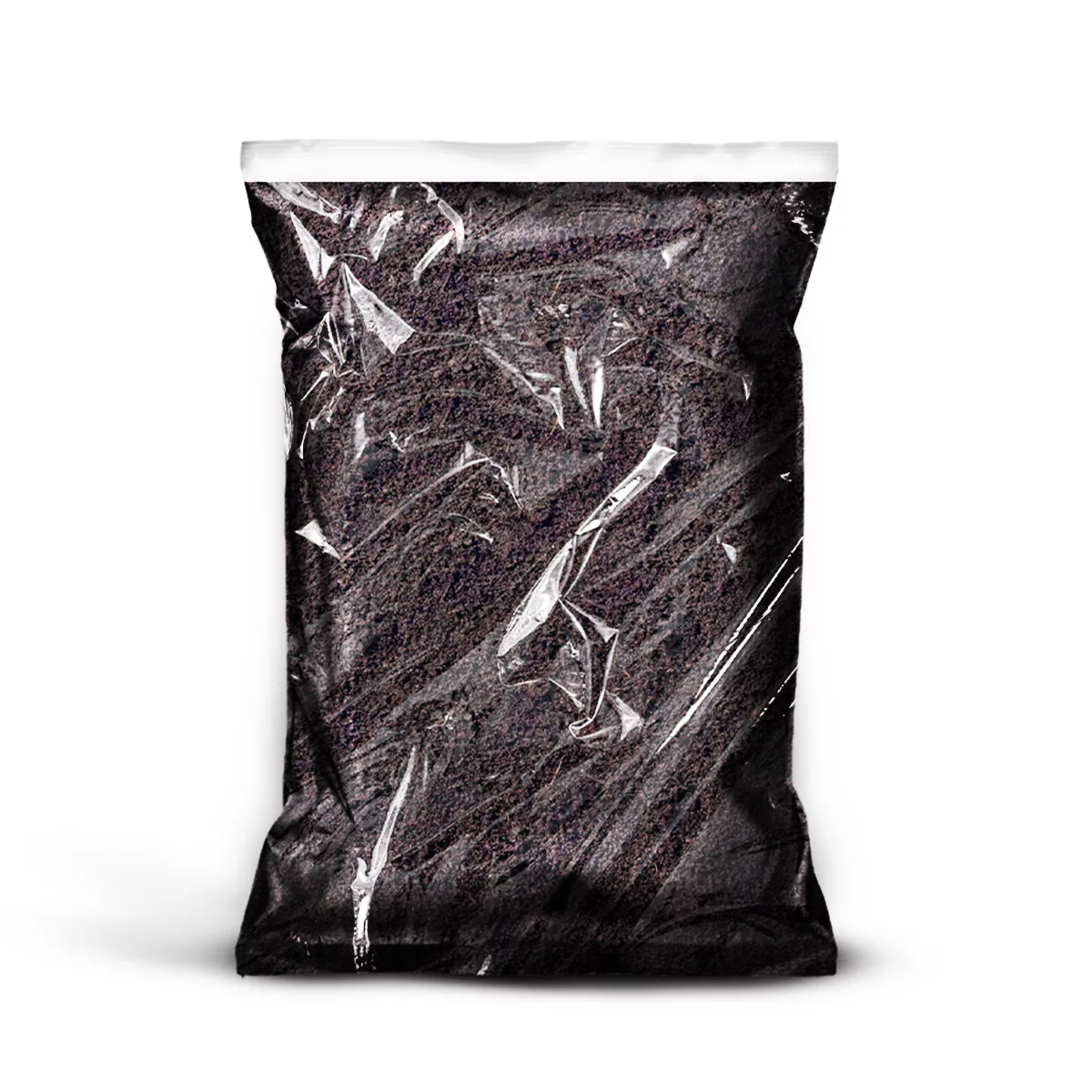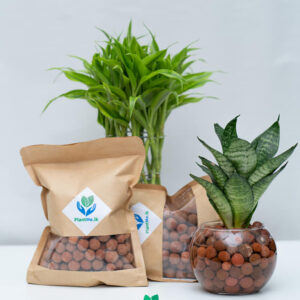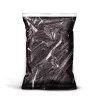Karadahaiya (Rice Husk Charcoal) – Organic Fertilizer – කර දහයියා (5KG)
Rs. 800.00 Original price was: Rs. 800.00.Rs. 650.00Current price is: Rs. 650.00.
Out of stock
Enrich your garden naturally with Karadahaiya, Sri Lanka’s trusted traditional soil enhancer. Made from sustainably burned rice husk, this eco-friendly charcoal fertilizer is packed with essential minerals that improve soil structure, retain moisture, and promote healthy root development.
✅ 100% Natural & Chemical-Free
✅ Improves Soil Aeration & Water Retention
✅ Reduces Soil Acidity
✅ Ideal for Home Gardening, Potted Plants & Organic Farming
Karadahaiya (Rice Husk Charcoal) – The Ultimate Organic Soil Enhancer
Karadahaiya (කරදහයියා), also known as rice husk charcoal, is a powerful, all-natural soil amendment that has been used for centuries in Sri Lankan agriculture. Derived from the husks of rice grains, this eco-friendly product is rapidly gaining popularity among organic gardeners, farmers, and sustainable living advocates.
In this comprehensive guide, you’ll learn everything about Karadahaiya – from its origins and production process to its environmental benefits and practical uses. Whether you’re a home gardener or a commercial grower, this 100% natural fertilizer will change how you grow plants forever.
What is Karadahaiya?
Karadahaiya is a form of biochar made by burning rice husks under limited oxygen conditions. This process, known as pyrolysis, converts the organic matter into a carbon-rich material with excellent water retention, aeration, and nutrient-holding properties. It is widely used in Sri Lanka as an organic fertilizer and soil conditioner. This black, lightweight, and porous material is rich in silica and carbon – two critical components for long-term soil improvement.
What distinguishes Karadahaiya from other forms of biochar is its deep cultural and agricultural roots in Sri Lanka. Farmers have long used this material, especially in rural regions where rice milling byproducts are abundantly available. As more people shift to organic agriculture, Karadahaiya has begun to emerge as a cornerstone of sustainable growing methods.
🧪 Karadahaiya vs. Chemical Fertilizers
| Feature | Karadahaiya | Chemical Fertilizers |
|---|---|---|
| Organic & Natural | ✅ Yes | ❌ No |
| Long-Term Soil Health | ✅ Yes | ❌ Depletes |
| Safe for Earthworms & Microbes | ✅ Yes | ❌ Often Harmful |
| Cost-effective Over Time | ✅ Yes | ❌ Frequent Reuse Needed |
How to Use Karadahaiya – Step-by-Step Guide
Karadahaiya is versatile and easy to apply. Whether you are growing potted plants, vegetables, or managing a large farm, follow these steps to get the most out of this natural soil enhancer.
Step 1: Prepare the Soil
Clear the area of weeds, rocks, and debris. Loosen the soil with a spade or tiller to allow proper mixing of Karadahaiya.
Step 2: Determine the Right Amount
- Potted Plants: Mix 1 part Karadahaiya with 3–4 parts of potting soil.
- Garden Beds: Apply 1–2 cm layer of Karadahaiya across the soil surface.
- Farms: Use 500–1000 kg per acre depending on soil quality and crop type.
Step 3: Mix with Compost (Optional)
For better results, mix Karadahaiya with compost or animal manure. This helps pre-charge the charcoal with nutrients and microbes.
Step 4: Apply to Soil
Spread evenly across the soil or planting area. For pots, fill with the pre-mixed Karadahaiya blend. For garden beds and farms, apply before planting and incorporate it into the top 6–8 inches of soil using a rake, hoe, or tiller.
Step 5: Water Thoroughly
Water the area well after application to help activate microbial activity and initiate nutrient cycling within the soil.
Step 6: Monitor and Maintain
- Continue normal watering and organic fertilizing as needed.
- Reapply Karadahaiya every 6–12 months depending on your soil and crop requirements.
Bonus Tip: Pre-soaking Method
Before applying, soak Karadahaiya in compost tea, worm castings, or liquid organic fertilizer for 24–48 hours. This allows the porous charcoal to absorb nutrients, enhancing its effectiveness as a soil amendment.
Note: Avoid using fresh or raw Karadahaiya in large amounts without mixing it with compost, especially for sensitive young plants or seedlings.
The History of Karadahaiya in Sri Lankan Agriculture
Sri Lanka’s agricultural history is filled with traditional knowledge passed through generations. Among them is the use of rice husk charcoal – Karadahaiya – as a fertilizer. Farmers in regions like Anuradhapura, Kurunegala, and Polonnaruwa often practiced controlled burning of rice husks after the harvest season. They would then store the charcoal to be used during the next planting season.
It was not just seen as a fertilizer but as a way to give back to the soil what was taken from it during harvesting. Over time, as chemical fertilizers became popular, many such practices faded. However, recent years have seen a resurgence of interest in these time-tested organic techniques due to the global movement toward eco-friendly and sustainable agriculture.
Scientific Composition of Karadahaiya
From a chemical perspective, Karadahaiya contains high levels of fixed carbon, silica (SiO2), and potassium (K), along with trace elements like phosphorus, magnesium, and calcium. Its pH level typically ranges from 8 to 10, making it an excellent neutralizer for acidic soils.
Its structure is highly porous, which increases the soil’s water-holding capacity while allowing better oxygen flow. This aerated environment is perfect for root development and for encouraging microbial activity in the rhizosphere – the critical zone of soil influenced by root secretions and associated soil microorganisms.
Benefits of Using Karadahaiya
1. Improves Soil Structure
The porous structure of Karadahaiya enhances soil aeration and drainage, creating the perfect environment for root development and microbial life. This is especially useful for clay soils, which often suffer from compaction and poor drainage.
2. Retains Moisture
Karadahaiya acts like a sponge, absorbing and holding moisture. In drought-prone areas, this feature reduces the frequency of watering and increases drought resistance in plants.
3. Enhances Nutrient Absorption
This biochar binds nutrients and prevents them from leaching away. It acts as a reservoir that slowly releases essential nutrients such as nitrogen, phosphorus, and potassium back into the soil.
4. Regulates Soil pH
Karadahaiya naturally balances soil acidity, making it ideal for crops sensitive to low pH levels. Regular use can bring acidic soils back to a neutral range over time.
5. Encourages Beneficial Microbial Growth
The charcoal structure offers a perfect habitat for helpful microbes that aid in breaking down organic matter and boosting soil fertility. These microorganisms are essential in natural farming methods where synthetic inputs are avoided.
6. Long-Term Soil Health
Unlike chemical fertilizers that offer a short burst of nutrients, Karadahaiya builds soil health over time. It remains stable in the soil for decades, contributing to sustainable agricultural practices.
Environmental and Climate Benefits
Karadahaiya contributes positively to the environment in several ways:
- Carbon Sequestration: It traps atmospheric carbon in the soil, reducing greenhouse gas emissions.
- Reduction in Chemical Usage: Less reliance on synthetic fertilizers leads to lower environmental pollution.
- Waste Utilization: It makes use of agricultural waste (rice husks) that would otherwise be discarded or burned.
- Improved Soil Biodiversity: Encourages the presence of earthworms, fungi, and other life forms.
How Karadahaiya is Made
The production process of Karadahaiya involves a technique called pyrolysis – a low-oxygen combustion of rice husks. Here’s how it is typically done:
- Collecting Rice Husks: After milling, husks are separated and dried under the sun.
- Controlled Burning: Husks are burned in an open pit, drum, or kiln with restricted oxygen flow.
- Quenching: The burning is stopped midway using water or covering the fire to preserve carbon.
- Curing: The charcoal is left to dry and cure before it is crushed and packed.
Traditional methods involve mud kilns or clay ovens, while modern producers use steel drums and pyrolysis chambers for consistency. The final product should be odorless, lightweight, and slightly brittle.
Applications of Karadahaiya in Farming
Karadahaiya is suitable for a wide variety of applications across both small-scale home gardens and large commercial farms:
- As a standalone soil enhancer
- Mixed with compost or animal manure
- As a mulch to reduce evaporation
- Integrated into potting mixes for nurseries
- Blended with organic fertilizers for added benefit
Best Crops for Karadahaiya
While almost all plants benefit from Karadahaiya, it is especially effective for:
- Vegetables – Tomatoes, chilies, brinjals, and leafy greens
- Fruit Trees – Mango, papaya, guava, banana
- Flowers – Hibiscus, rose, marigold, jasmine
- Spices and Herbs – Mint, basil, coriander, curry leaves
Storage and Shelf Life
Karadahaiya should be stored in a dry area, away from moisture to preserve its structure. When kept properly, it can remain usable for years without losing its beneficial properties. It does not decompose like compost but remains inert and stable.
Common Myths About Karadahaiya
There are several misconceptions about rice husk charcoal that need clarification:
- Myth: It burns plant roots – Fact: Only if applied raw and excessively. When mixed with soil or compost, it’s completely safe.
- Myth: It’s the same as ash – Fact: Ash is mineral residue, whereas Karadahaiya retains carbon and structure.
- Myth: It has no nutrients – Fact: It holds and releases nutrients from the surrounding soil and compost.
Pricing and Where to Buy
You can buy Karadahaiya online at PlantMe.lk. We provide eco-friendly packaging and fast island-wide delivery in Sri Lanka.
Retail Prices:
- 5KG – Rs. 650.00
- 10KG – Rs. 1,200.00
Bulk Orders:
We also accept bulk orders for farmers, nurseries, and landscape professionals. Contact us for wholesale pricing.
Conclusion
Karadahaiya is not just a fertilizer; it is a holistic solution for regenerative agriculture. It brings ancient wisdom into modern cultivation, offering a sustainable way to nourish the soil, protect the environment, and grow healthier plants.
With rising awareness of climate change, soil degradation, and food security, choosing organic and sustainable options like Karadahaiya is more important than ever. Whether you’re planting a home garden or managing a farm, incorporating Karadahaiya will pay dividends in yield, resilience, and environmental impact.
Buy high-quality Karadahaiya today from PlantMe.lk and join Sri Lanka’s green revolution – one garden at a time.
Frequently Asked Questions (FAQ)
1. What is Karadahaiya used for?
Karadahaiya is used as an organic soil enhancer and fertilizer. It improves soil structure, retains moisture, balances pH levels, and promotes healthy plant growth.
2. Is Karadahaiya safe for all types of plants?
Yes, Karadahaiya is safe and beneficial for vegetables, fruit trees, flowers, herbs, and even indoor plants when used in the correct ratio.
3. How do I apply Karadahaiya to my garden?
You can mix it directly into soil, blend it with compost, or use it as mulch. For potted plants, mix 1 part Karadahaiya with 3 parts potting soil.
4. Does Karadahaiya replace compost or fertilizer?
No, Karadahaiya works best when used alongside compost or organic fertilizers. It enhances their effectiveness by storing and slowly releasing nutrients.
5. How long does Karadahaiya last in soil?
Karadahaiya is highly stable and can last for decades in the soil, continuously improving soil quality and structure over time.
6. Is Karadahaiya the same as ash?
No. Ash is the mineral residue left after complete combustion, while Karadahaiya is carbon-rich biochar made under low-oxygen conditions. It retains structure and enhances soil health.
7. Can Karadahaiya be used in organic farming?
Absolutely. Karadahaiya is 100% natural and chemical-free, making it ideal for certified organic farming and sustainable agriculture practices.
8. What are the environmental benefits of using Karadahaiya?
It sequesters carbon, reduces chemical fertilizer usage, promotes biodiversity, and recycles agricultural waste, making it an eco-friendly choice for gardeners and farmers.
9. Where can I buy Karadahaiya in Sri Lanka?
You can purchase high-quality Karadahaiya online from PlantMe.lk with island-wide delivery and eco-friendly packaging options.
10. What is the shelf life of Karadahaiya?
When stored in a dry place, Karadahaiya can last for years without degrading. It doesn’t expire or rot like organic compost.





